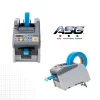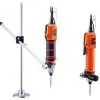Regardless of what you’re manufacturing, implementing a torque measurement program to ensure your tools are applying the correct amount of torque is necessary.
A proper measurement program can help you avoid free fall (not tightened enough), and/or damage to either the fastener or substrate (too tight), all while extending the life of your tool.
Torque testers are a vital production component to ensure assembly tools and torque wrenches are providing accurate and repeatable results, so let’s quickly jump into their use, and highlight the process by which this testing and calibration is conducted.
Overall, the operation of torque testers is a pretty standard across the board with the exception of what some of the buttons are called between brands/models.
- First up is identifying and selecting the measuring mode for your test within the torque tester’s menu system. Peak torque, first torque, track mode, etc.
- Adjust the torque of the tool, aiming for the target torque. This might take some trial and error to align the torque output of the tool and reading on the tester.
- Apply torque to the sensor by using the tool until the tool shuts off or the torque wrench or driver hits torque.
- At this point the preliminary results should be displayed. Most companies will require a certain number of rundowns – 25 or more.
- Record the results. Many torque testers will allow you to save these for future reference.
- If the tool is not able to come into calibration, service is recommended.
ASG offers a variety of torque testing models including the DTT Series, DDT-L Series, and ST Series Smart Transducers. ASG also carries a variety of HIOS torque testers which can be
used for testing or auditing depending on the needs of the operator. All testers come with a certificate traceable to N.I.S.T. Various rundown adapters are also available.







